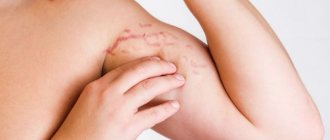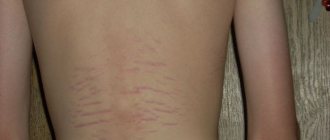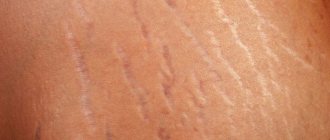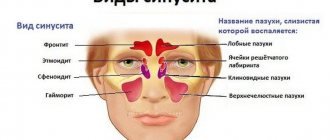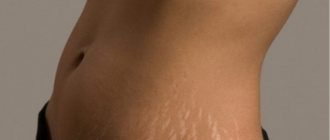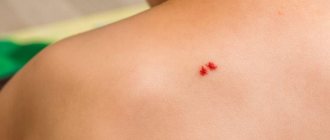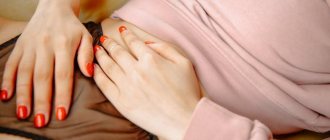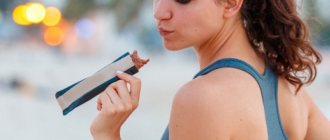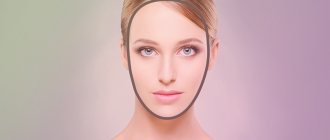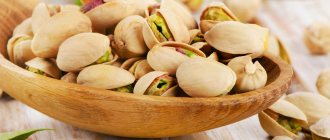Many people know firsthand about this problem. Here are just some figures that may indicate the relevance of correcting this nosology: up to 70% of expectant mothers experience similar “changes”; 23% of teenage girls note the appearance of stretch marks in the mammary glands. Real figures in different age groups, taking into account different incidence rates, have not been published, and it is not possible to count the number of calls.
The solution to this problem by specialists comes down to preventing the occurrence of this condition. Correction of stretch marks is a complex task that requires an integrated approach, consistency of therapy, material and time costs, compliance with all doctor’s recommendations on a healthy lifestyle and educational activities on the part of aesthetic medicine doctors. Many specialists refuse treatment for stretch marks, believing that it does not bring the desired effect and is difficult to correct, since it is already formed connective tissue.
Very often, doctors suggest correcting stretch marks as scars, but this is an absolutely independent nosology both from the point of view of etiopathogenesis, clinical and morphological picture, and when choosing treatment methods.
Striae (striae distensae, striae gravidarum) - stripe-like skin atrophy, stripe-like atrophoderma, "stretch marks" - a kind of skin atrophy in the form of narrow sunken wavy stripes, localized mainly in places of greatest stretching of the skin (thighs, buttocks, chest, abdomen).
Striae are a serious cosmetic defect that appears mainly in young people, as well as in women during pregnancy. Both of them are concerned about the aesthetic issue.
Etiology and pathogenesis
When forming a problem, they distinguish
:
- predisposing factors (genetic predisposition, mechanical factors, disorders in the pituitary-adrenal cortex system, physiological conditions associated with hormonal imbalance in the body and increased production of stress hormones (puberty, pregnancy));
- provoking factors (intense sports, sudden fluctuations in body weight, growth spurt, heavy lifting).
Experts believe that the main reason for the formation of the nosology is hormonal imbalance: the predominance of the role of adrenocorticotropic, thyroid-stimulating hormones, as well as hormones of the adrenal glands, thyroid gland and gonads. No less importance is given to excessive stretching of the skin during pregnancy in women (on the abdomen, mammary glands), in women and girls who have sharply gained weight (on the hips, waist and buttocks), in athletes when building muscle mass (in the shoulder area). belt, hips)
Striae can be a symptom of diseases (Marfan syndrome, Itsenko-Cushing's disease, hypercortisolism) formed during juvenile hypercortisolism, during puberty in children who are rapidly gaining body weight, taking anabolic hormones in athletes, against the background of diencephalic syndrome.
In the pathogenesis of striae, the leading role is given to a decrease in the synthesis of collagen and elastin by fibroblasts while maintaining the ability to synthesize metalloproteases (collagenase, elastase), thus, in the spectrum of cells of the fibroblastic series, fibroblasts predominate, synthesizing enzymes that destroy collagen and elastin - the main proteins that maintain the strength of the skin. As a result, with excessive stretching of the skin caused by one of the above etiological reasons, the skin ruptures, the destruction of its mesh layer occurs while maintaining the integrity of the epidermis. Collagen and elastic fibers and blood vessels tear, and a “failure” forms in the skin.
Why do stretch marks on the body itch?
Some time after childbirth, women who have stretch marks on their bodies complain of itching in the area of stretched skin.
This means that the process of restoring hormonal levels is underway, and with it the normalization of the body’s functioning and regeneration processes.
Collagen and elastin begin to be sufficiently produced in the skin, and connective tissue is actively formed. In other words, healing is underway. The skin itches exactly where it was damaged (in this case, stretched).
Clinical picture
The clinical picture of stretch marks depends on the morphological properties of the skin, the degree of stretching, hormonal levels, and concomitant pathology. Striae can be single or multiple. Length ranges from 1.0 to 10.0 cm, width from 1.0 to 6.0 mm. Arranged radially or parallel. The color of the striae changes. According to the classification of stages, the inflammatory and atrophic stages are distinguished.
Inflammatory stage (“young” stretch marks up to 6 months) – color varies from purple-red to light pink. An important criterion is also that between the torn fibrous structures there are cellular elements, as well as a large number of paretically dilated vessels. There is stagnation of blood.
Atrophic stage (“old” stretch marks after 6 months) – color varies from white to whitish with a pearlescent tint. In this case, they represent a cavity, the walls of which are formed by orderly arranged collagen fibers. There are no cellular elements or vessels.
The relief has a different configuration (striae can be flush with the skin, either retracted or convex). The clinical picture depends on the area, degree and depth of damage to the fibrous structures of the dermis.
Russian classifications have not been used, so below is a classification that is widely used in Europe.
Classification of striae, author: Philippe Depres (1996), Evgenia Ranneva (2012)
| Stage | Duration | Process characteristics | Clinical picture | Striae color |
| Stage I | Up to 6 months | Aseptic inflammation | In rare cases, convex | From pink to red-purple |
| Stage II A | From 6 months to a year | Attenuation of the inflammatory process, formation of atrophic deformations of the skin | Absence (presence) of noticeable depression, “stepped relief” (-) | Pink with a bluish tint |
| Stage IIB | From a year or more | Atrophic skin deformation | Absence (presence) of noticeable depression | Skin color white |
| Stage III A | From a year or more | Atrophic skin deformation | <1 cm wide “stepped” (+) "ladder runs" (+) | Lighter than normal skin tone, white |
| Stage III B | From 5 years or more | Atrophic skin deformation | <1 cm wide | Lighter than normal skin tone, pearly whites |
| Stage IV | From 5 years or more | Severe atrophic deformation of the skin | ›1 cm wide "stepped" (++) "ladder runs" (++) | Lighter than normal skin tone, pearly whites |
Features of the formation of stretch marks (4 types)
Before turning into atrophic scars, stretched tissues undergo several stages of changes:
- pink stretch marks - form directly after rupture of dermal fibers. Some people get scared when they see pink or red lines on their body. However, stretch marks on the body turn red only because blood vessels are damaged when the fibers break. Immediately after formation, the stretch marks are close to the surface, which makes it possible to almost completely restore the skin to its previous appearance.
- purple stretch marks and - they become like this after some time, but at this stage you can still get rid of them
- blue - stretch marks acquire a bluish tint 4 to 5 months after formation. This means that cosmetics will no longer help in the fight for beautiful skin.
- white – stretch marks lose pigment and completely scar after 8 months. At this stage, the only way to get rid of them is with laser resurfacing.
Treatment methods. Short review
Pathogenetic schemes for correcting the condition prescribed by a specialist must be reasonable, comprehensive, and consistent. The sooner the correction begins, the greater the chances of getting positive results.
During the inflammatory stage, a sufficient number of vessels and many cellular elements remain in the affected area (mostly fibroblasts that secrete cytokines, biologically active substances, growth factors, enzymes). In this case, the tissue retains its potential for recovery. Striae in the atrophy stage have fewer vessels and cellular elements (especially fibroblasts), so the potential for restoring a cosmetic defect is less and decreases with age due to an increase in regeneration time. As a result, procedures for correcting stretch marks should be aimed at stimulating blood circulation and microcirculation, metabolic processes, fibroblasts, their synthetic and proliferative activity, targeted delivery of nutrients (vitamins and microelements), increasing tone and softening scar tissue.
Before starting correction schemes for this nosology, it is first necessary to exclude endocrine pathology. If it is detected, it is necessary to correct the underlying disease and only then carry out cosmetic procedures in areas with formed stretch marks. It is worth remembering that work is carried out not only on the defect itself, but also on the surrounding tissue. The correction program is selected individually, taking into account the stage of the process.
The main methods of correction: local use of cosmetics (home and professional care), chemical peels (TCA, phenol) with preliminary abrasion, injection techniques (mesotherapy, revitalization, contour plastic), intradermal biostimulation, physiotherapeutic correction (microcurrent, magnetic thermal therapy, electrophoresis, phonophoresis, vacuum massage, cryotherapy), laser therapy (ablative and non-ablative lasers).
4.Treatment
To date, many effective and successfully practiced methods for eliminating stretch marks have been developed, although half a century ago this task was considered difficult to solve (due to its multifactorial nature and etiopathogenetic complexity). An important factor is the “age” of striae at which treatment begins.
Today, various mechanical, chemical, physiotherapeutic, instrumental methods are used, such as chemical peeling, intradermal biostimulation, treatment with hyaluronic acid, computer ridolysis, mud therapy, all kinds of masks, massages, contrast water procedures, laser resurfacing and many others. The effect, at least visually, is achieved in almost all cases, so there is no reason to fall into despair and hide in tightly closed clothes. Cosmetology of the 21st century has something to oppose to the eternal problem.
Use of cosmetics (home and professional care)
At home, the patient is obliged to carefully care for areas that are risk areas for the occurrence of this nosology. It is recommended to douse with cold water, contrast shower, and self-massage with hard mittens. It is possible to use baths with aromatic oils. After water procedures, apply external products, creams containing vitamins A, E, C, collagen and elastin hydrolysates, chamomile, tea tree, and chestnut extracts. The creams are applied with soft, smooth, stroking movements. Professional care includes mud and algae wraps. Course of wraps: 10–12 procedures 2–3 times a week. The advantages lie in the availability of the method and the preventive approach (the ability to start using it at any time, in any age group, at different stages of formation).
When prescribing cosmetic care, we must remember that this is only an additional method of correction to the main methods of treatment. At a young age and in the early stages of pregnancy, care can be regarded as a preventative method for the formation of stretch marks.
How do stretch marks begin during pregnancy and is it possible to avoid them?
All about pregnancy
Author: Vlada 01:00, November 18, 2015 11341 0 0
So, what are striae? In common parlance they are called stretch marks on the skin. They occur during the process of stretching the skin, which most often occurs due to sudden weight gain, rapid weight loss or pregnancy. The number of stretch marks, as well as their appearance (white, purple) mainly depend on the elasticity of the skin. Some, for example, do not even know what it is, since their skin has a high level of elasticity. However, those who are less fortunate - do not despair, it is possible to get rid of stretch marks, as well as prevent their appearance.
At what stage of pregnancy do the first stretch marks appear?
Above we determined why stretch marks appear during pregnancy,
Now let's find out what month to expect them. The first stretch marks may appear on the chest already in the first trimester, since the mammary glands are one of the first to enlarge when a woman is in an interesting position. At the end of the second and beginning of the third trimester (when the belly begins to actively grow), the skin on the abdomen also stretches greatly, which can lead to purple lightning patterns. The same “drawings” appear on the thighs of pregnant women.
And yet, it is worth paying attention to the fact that very often stretch marks appear only in the 9th month, and only in one or two places. Also, most mothers claim that throughout their entire pregnancy they did not have a hint of such defects, but immediately after childbirth unpleasant patterns appeared on the skin. As a rule, 8 out of 10 expectant mothers are not able to resist this phenomenon.
Skin care will reduce the risk of stretch marks
If you are interested in a method - how to prevent stretch marks during pregnancy,
then it’s better to take care of your skin in advance, using moisturizers from the early months. Problem areas are considered to be the chest, abdomen and thighs (upper and lower parts), so these areas should be given special attention when applying stretch mark treatment. This way, you nourish your skin with all the necessary vitamins and minerals, softening the process of stretching during weight gain.
There are remedies to prevent stretch marks during pregnancy
, such as special creams, gels, milk or oil, they all enrich and nourish the skin, giving it additional elasticity, which will help avoid external damage to the skin. Olive oil is in good standing against the occurrence and treatment of this kind of defects. It is known for its beneficial properties for the body, but these components have the same wonderful effect on the skin.
Preventative measures to combat future stretch marks
As a basic preventive measure, you can use several methods before conceiving a child. By following this point, you will put your body in order and prepare it for the upcoming stress.
- The first thing you need to do before pregnancy is to normalize your weight. The most optimal weight level reduces the occurrence of stretch marks by almost half;
- proper nutrition. A well-balanced diet rich in vitamins and minerals, which the expectant mother’s body will need, will help protect the skin from deformation when the fetus takes all the vital “juices” from the mother, and the skin loses its health;
- Another point can be called a contrast shower, it is very useful for blood circulation and collagen fibers. You can also conduct a course of wrapping before pregnancy.
Be more attentive to your body, any signs of stretch marks during pregnancy
– this is a lack of vitamins and nutrients in your skin, which makes it unstable to changes.
Tags: stretch marks during pregnancy
Revitalization
This method allows you to replenish the volume and create the most favorable environment for proliferation, migration and differentiation of fibroblasts. Frequency of 6–8 procedures once every 2–3 weeks, the ability to combine in one session with mesotherapy. This allows you to get the most pronounced effect. If you use the monomethod, it is necessary to additionally stimulate blood flow and microcirculation, as well as administer drugs that will help nourish skin cells.
One of the new generation revitalizants, which can be said to be “two in one,” are Jalupro preparations . All Jalupro preparations contain an amino acid functional cluster (glycine, proline, lysine, leucine) and unstabilized hyaluronic acid (HA).
Corrections with Jalupro drugs
/
Hydroxylated forms - hydroxyproline and hydroxylysine play an important role in the formation and stabilization of the three-dimensional structure of collagen and elastin, protect them from the effects of proteolytic enzymes, stimulate epidermal cells and increase the level of skin hydration. However, it should be noted that proline and lysine take part in the synthesis of collagen and elastin, and their hydroxylation occurs after inclusion of a protein molecule in the polypeptide chain.
The amino acid glycine, when administered intradermally, significantly increases the flexibility of the collagen molecule.
Levorotatory isomer of the essential amino acid leucine takes part in the synthesis of almost all proteins, including collagen and elastin. L-leucine helps restore skin after injury and surgery.
Thus, the intradermal administration of amino acids provides fibroblasts with building material, normalizes the processes of catabolism and anabolism of protein structures, reduces the rate of their degradation, stimulates the production of tissue growth factors (TGF β), new collagen and elastin, restoring the normal structure of the skin.
Another equally important component of Jalupro is unstabilized HA. The HA molecule is capable of providing transport of the amino acid cluster of the drug, rapid and pronounced tissue hydration, and stimulating the processes of proliferation, differentiation and migration of skin cells, including fibroblasts.
Lasers
The laser principle of correction, due to increased damage, stimulates fibroblasts, creates conditions for skin regeneration and favors the restoration of the structure of the dermis. The recovery period proceeds with the formation of a crust, rehabilitation takes 3–4 weeks.
Table 2. Recommendations for methods of correcting stretch marks depending on their timing of occurrence
| Timing of occurrence | Drugs and correction methods |
| Pregnancy and lactation |
|
| Stage of inflammation |
|
| Atrophy stage |
|

